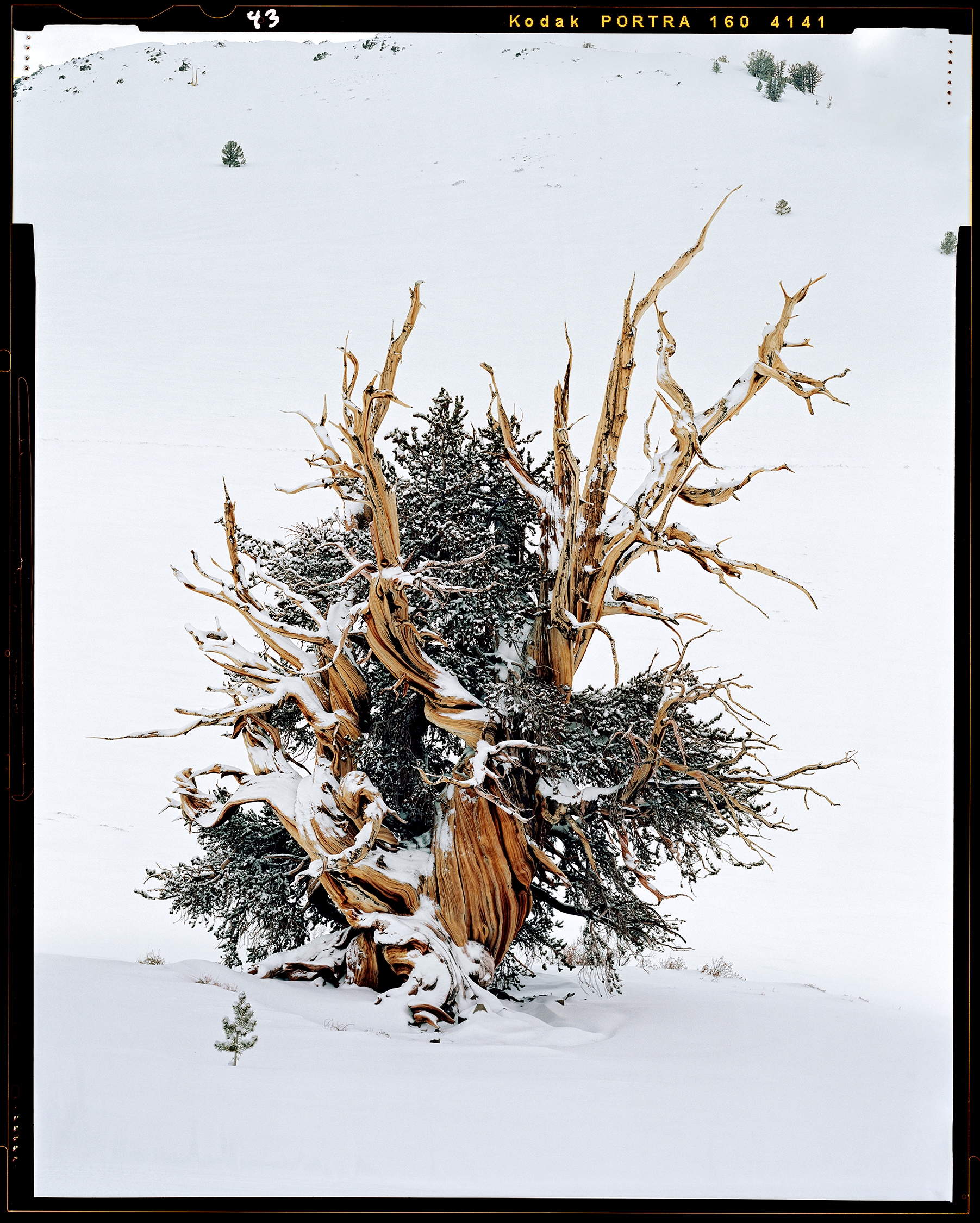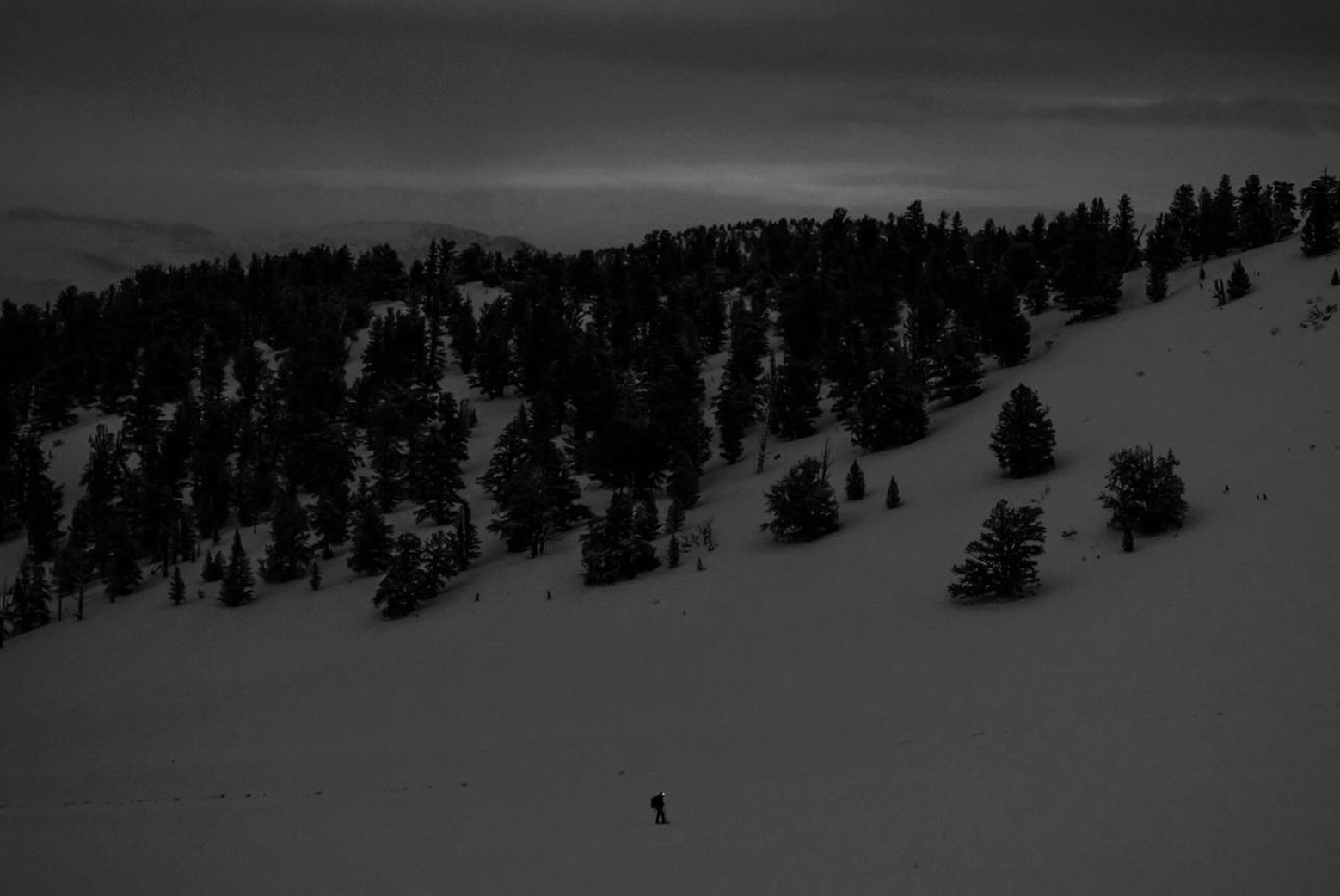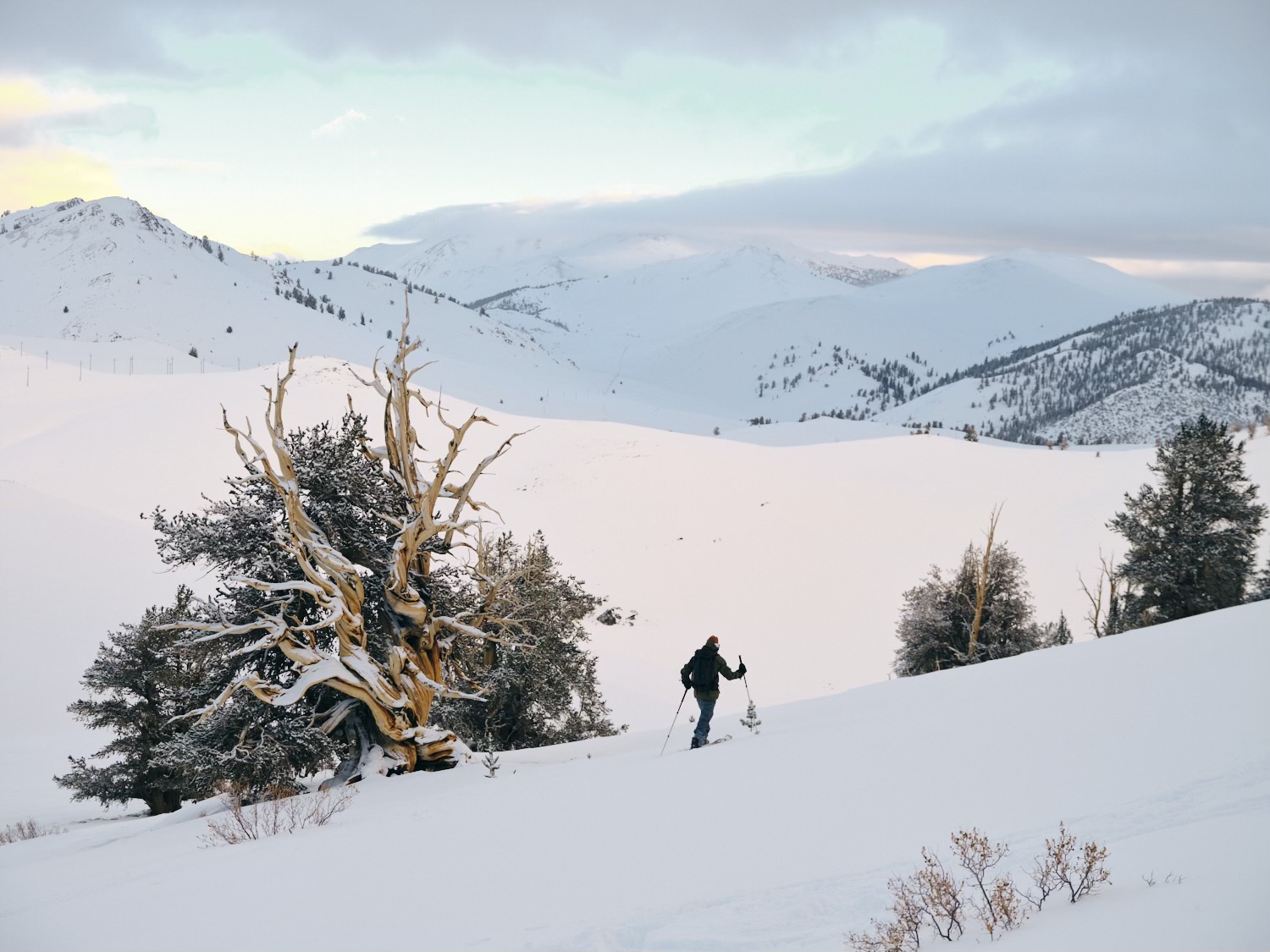

Brain Kelley
Gathering Growth
Heidi: The weather was both perfect and unforgettable for snowshoeing up nearly 5,000 vertical feet during a storm with a 4×5 camera and gear (45 lbs) on your back. What was going through your mind during the ascent?
Brian: When I’m on a mission like the one going up the White Mountains with a specific goal in mind I sort of go into tunnel vision. I just keep pushing even when I feel tired. I’m used to hiking great distances with the heavy pack on but adding snow shoes, freezing temps and 3 feet of snow definitely pushed my limits.


Photos by Alex Turner.
Describe the setting and conditions that night.
We camped at 11,000 ft in -4 degree weather.
Getting to the summit in the dark during the storm was a really strange feeling… pushed to my physical limits I just wanted to crawl into a sleeping bag and crash but we had to set up camp and try to get some food into my system. Unfortunately, I didn’t get my extra down layers on fast enough and the cold started to get to me and my body was shutting down. But in those situations, you can’t just give up or think you’re going to wake up in a warm cozy bed. Luckily Forrest has so much experience in these situations and got the tent set up quickly and started melting snow to fill Nalgenes with hot water to stick inside my bag, I was grateful that as a Patagonia ambassador and pro snowboarder, these conditions were familiar to him. I felt so sick that night that I couldn’t even put food down. I went to bed that night not sure if I’d have the strength or desire to wake up at dawn to get the shot. Luckily the -20 bag did the trick and I was able to get enough rest and core temp back to start feeling strong enough to go back out. I definitely questioned whether any photograph is worth putting myself at that type of risk, especially since I have a family.
 Forrest Shearer and the cover tree, a Great Basin bristlecone pine (Pinus longaeva) in California’s Sierra Nevada.
Forrest Shearer and the cover tree, a Great Basin bristlecone pine (Pinus longaeva) in California’s Sierra Nevada.
Loading film in those conditions must have been a challenge, how many images did you manage to get of the majestic, twisted bristlecone?
Going into missions like this with film, I usually pre-load film in the car. I had five film holders so ten shots total, not a lot but I felt confident. The big worry is condensation and snow getting to the film. I remember the night before shooting the tree just leaving my bag out in the elements… 20k worth of gear just chilled in a -4 snow storm shout out to Shimoda bags! But while shooting the tree I was fumbling around on snowshoes trying to figure out angles and felt like snow was just going everywhere. Also, the storm kept going in and out during the shot. Honestly, when I sent the film out to get developed I just thought to myself I hope at least one comes out.
What have trees taught you over the years and what other projects have grown out of your work for Gathering Growth?
When I first started to photograph trees I was just chasing “Champion Trees” nominated as the largest of their species. When I would go to these trees I tried to not treat them as a tourist destination or some sort of mark on a checklist. Trees have taught me a lot about patience and respect. In order to pay them respect and make a great image that represents the hundreds or even thousands of years they have been alive you have to spend time with them and see how the light interacts throughout the day. After two years of photographing champion trees I started the Gathering Growth Foundation as a way to expand upon the archive and document more trees and old-growth forests, and to try to educate people about the important role trees play in our everyday lives. I’m currently working towards Gathering Growths’ first book. The oldest and largest trees of NY state.
Photo assignments often offer new experiences, what did this present to you?
This assignment with Patagonia put me into a world that was so foreign to me. I had never been snowboarding or split boarding before but I knew I wanted to see these trees in the dead of winter, a time that most would never venture to see them or roads are closed down. Overall the assignment pushed me out of my comfort zone and made me a stronger more confident human.
What draws you to conservation work?
My biggest motivation to work in the conservation world is to allow the future to know what we used to have. I think we can save a lot and plant new trees but there’s something so depressing about knowing that wildland fires, invasive insects, and intense storms are wiping out some of our oldest and largest trees. Some 2000-year-old trees might be irreplaceable or might not be seen in the future.